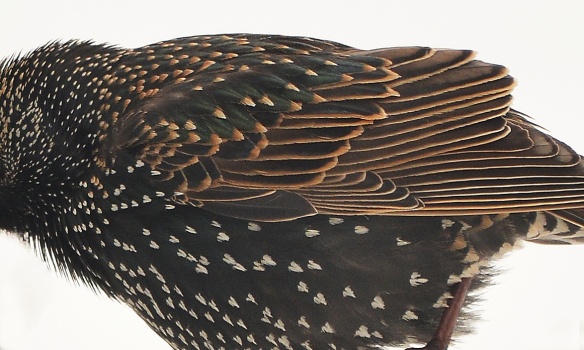Backyard habitats come alive with the songs and colors of migrating birds in May, but a large flock of goldfinches swarming nyjer seed feeders throughout the day tends to dominate the immediate landscape. Goldfinches in their brilliant breeding plumage appear to glow in the poor light of rainy days. By the 14th consecutive day of rain, the radiance of 20 busy finches is most welcome!

At peak feeding times, there are many more birds than feeding stations and the chaotic activity has the look of a large number of humming birds at a sugar-water feeder. Some birds resort to feeding on spilled seed on the ground while others battle for position at the primary source. It’s a game of musical perches, and it seems everyone gains access to food at one point or another.


A shrubby tree like ornamental sand cherry adds critical, backyard habitat for foraging songbirds. It fills the need for strategic perches, which, in turn, provide stationary subjects for observation and photography. In this story, the background is mostly the partially opened flower buds of sand cherry, several days ahead of full bloom.

Occasionally, a member of the flock looks a little odd, with yellow breeding plumage interrupted with gray-green patches. These birds haven’t completed their spring molt.

Females have their own dress code, appearing in yellowish-olive garb rather than the gaudy yellow of males.

I’ll see some of these finches again in the summer, as breeding pairs in natural habitats. Then, they’ll be darting over weedy fields and brush lots, easily identified by their unique song and undulating flight pattern. They’ll be foraging on the tufted seeds of milkweeds and thistles and using the soft, fluffy tufts from the seed to line their nests.


Photos by NB Hunter. © All rights reserved.




























